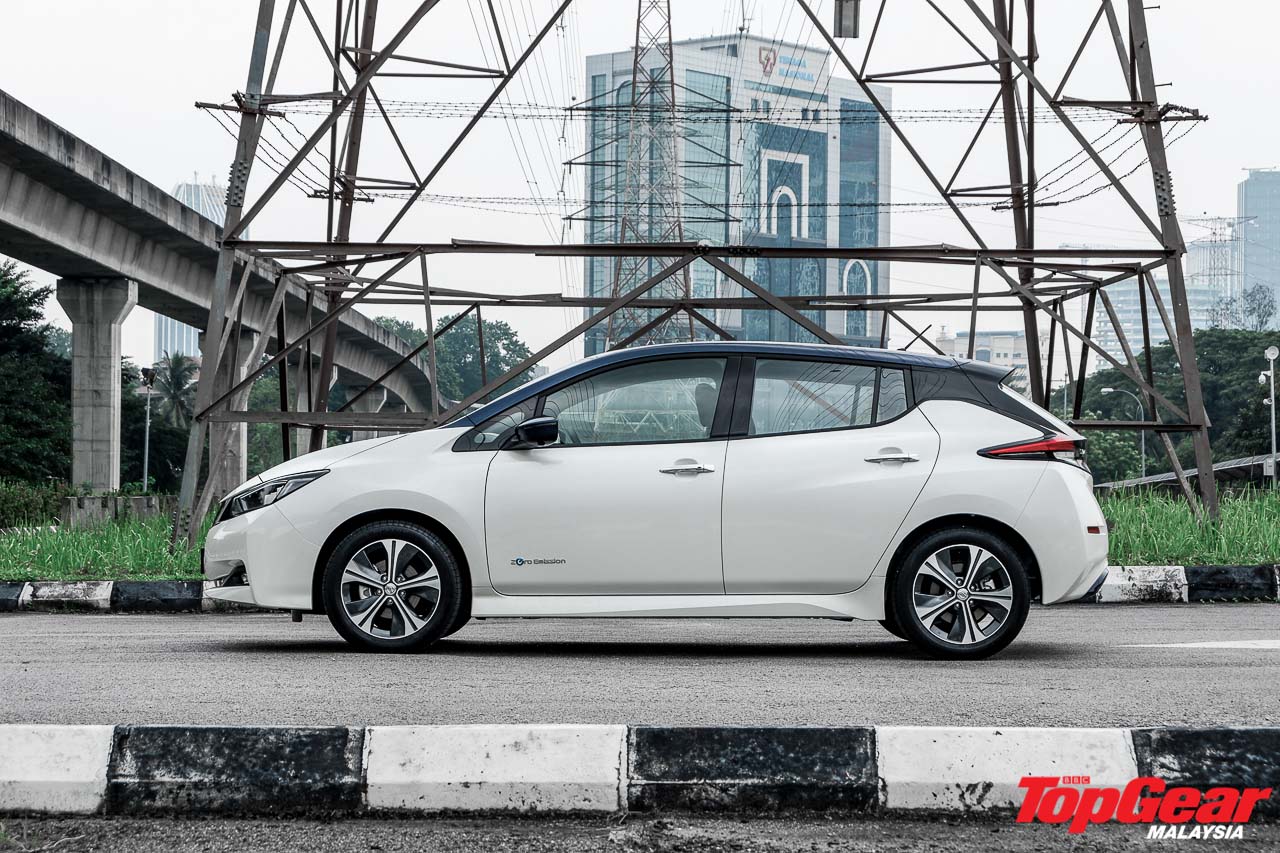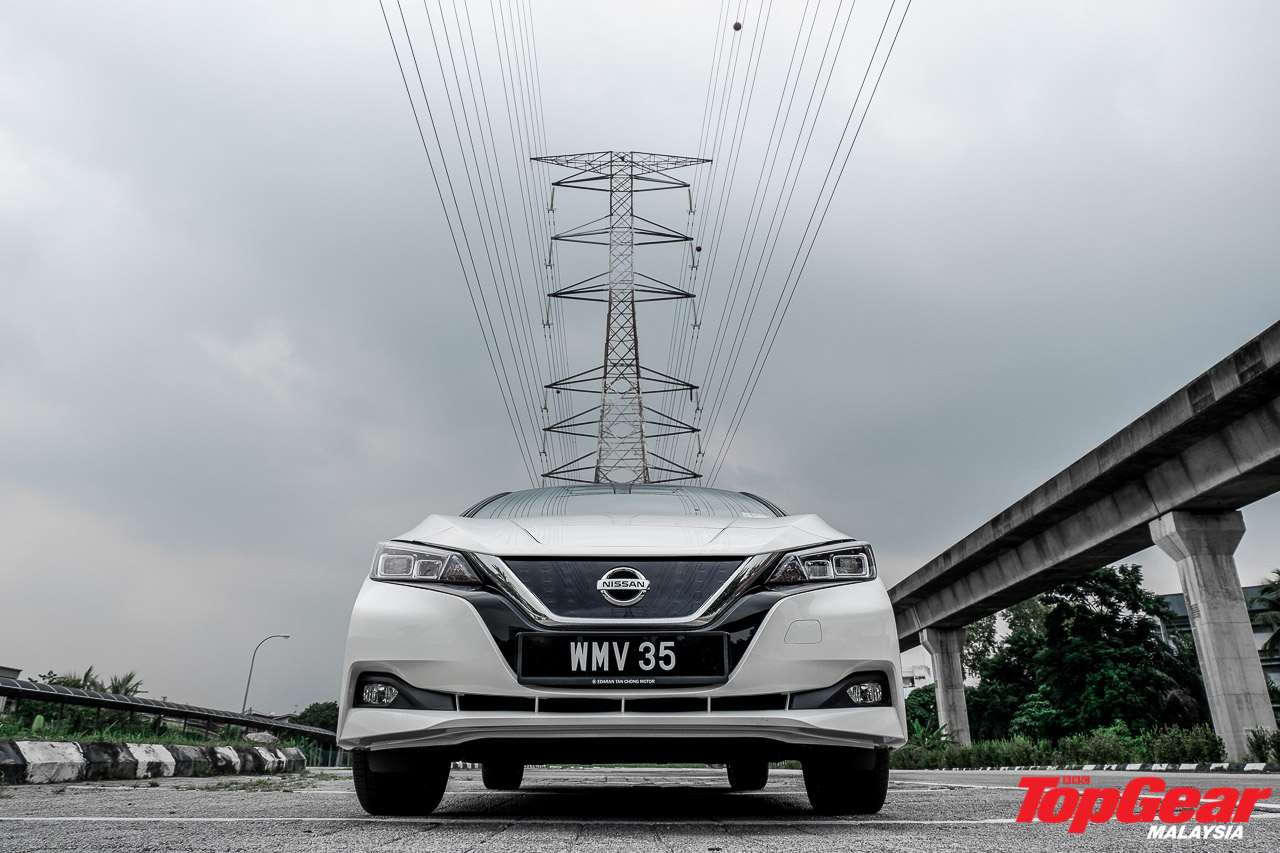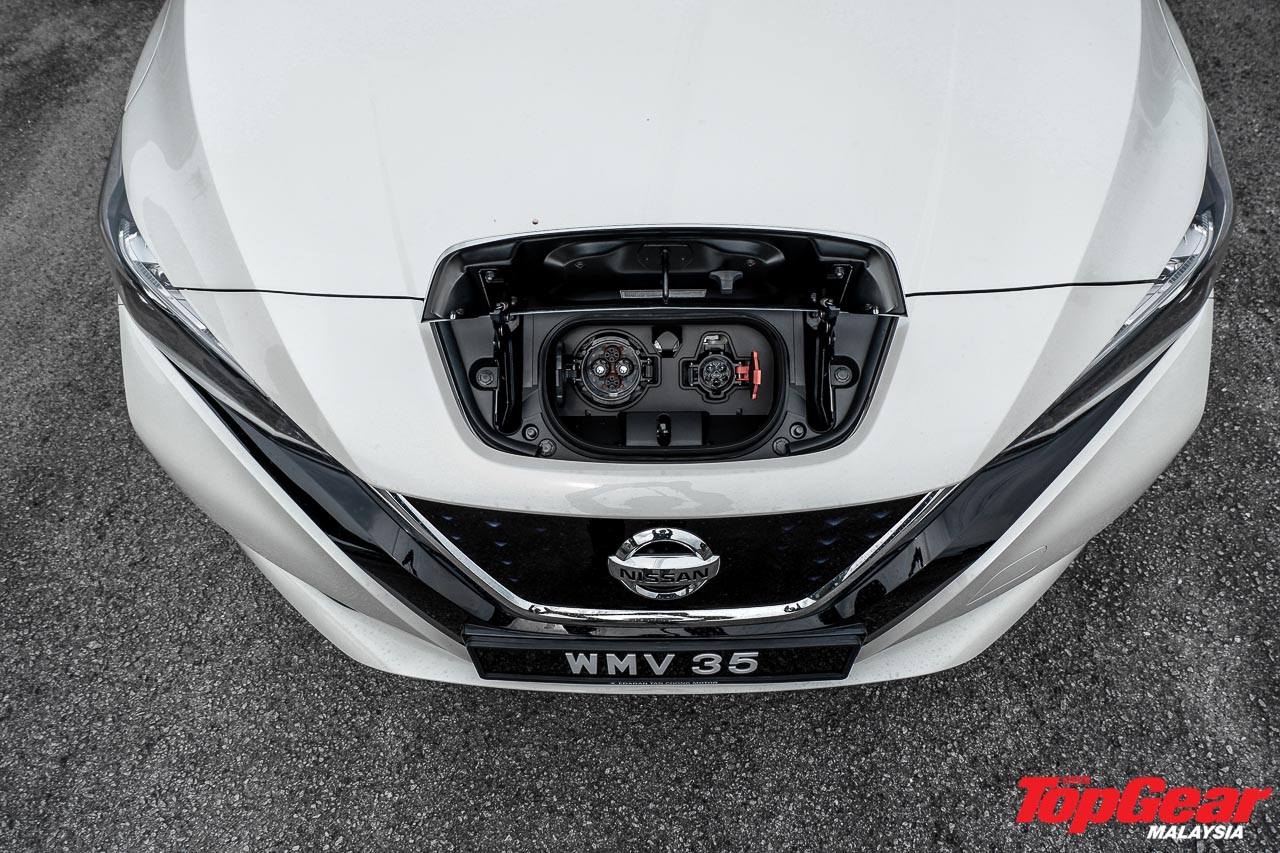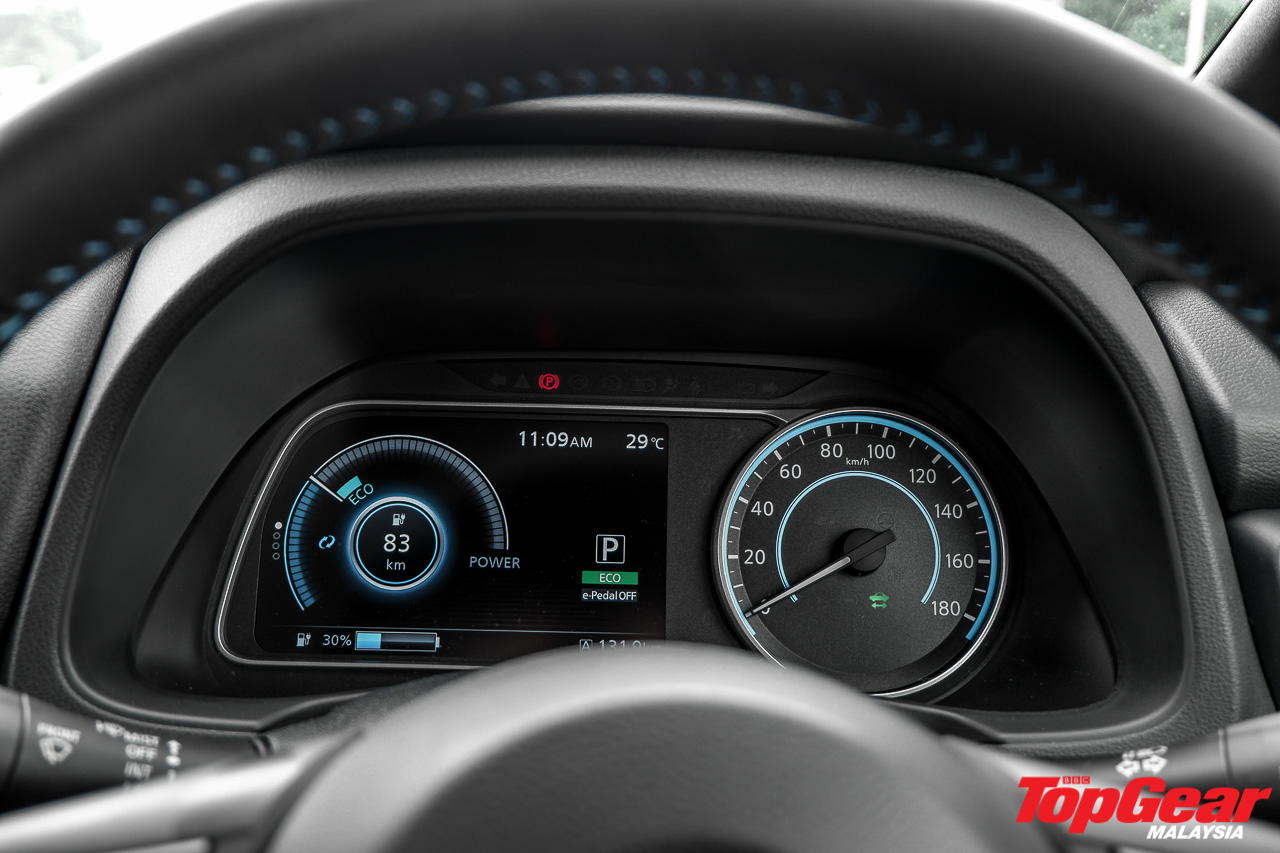Review: Nissan Leaf – RM188,888

Different Circuits
Range anxiety still exists in 2019.
It’s something we quickly realised when we first picked up the new Nissan Leaf, only to realise that the car was only juiced 98 percent of the way up. Why wasn’t it 100? Did the walkable distance from the charging station at the Edaran Tan Chong Motor (ETCM) headquarters to the parking lot really use up two hundredths of the 40kWH lithium-ion battery? Or did it all just vanish the moment the air-conditioning kicked in as we pushed the car’s start button?

The Leaf’s advertised range of 311km should have calmed our nerves. But we couldn’t keep our eyes from scoping the instrument cluster for the remaining charge and range, making us oblivious at first to how smooth and composed the EV was in wriggling its way out of the Kuala Lumpur city centre.
By the end of the day, we used up 20 percent of batter after covering about 45km. Extrapolate these numbers and you should get about 230-240km of real world mileage on a full charge; it’s some ways off the claimed figure, but still decent after factoring the heat and traffic the car had to endure. It’s certainly a massive step up from the first-gen Leaf, which only packed a 24kWh good for a claimed 195km when it was launched locally in 2013.
Six years on, the more noteworthy change in our books is how much better-looking the Leaf has gotten. What used to be an awkward, bug-eyed hatch has become sharp and chiselled – its two-tone paintjob (blue roof against a pearl white body) looking especially fetching while staying true to the Leaf’s eco-centric theme. The Leaf is emblematic of Nissan’s new design language which has also shaped the upcoming Almera and Sylphy. If Nissan keeps this up, that’s half the job done on the sales floor.

Driving tech counts for a big portion of the other half. And on top of beefing up the Leaf’s battery and electric motor (up from 90kW to 110kW), Nissan has also given its electric number something it calls an e-Pedal. It essentially allows you to drive the car with a single pedal, which is a bit of déjà vu for us; the Infiniti Q50’s Distance Control Assist (autonomous braking) practically made it possible to drive it with just the accelerator. The e-Pedal in the Leaf is slightly different in the sense that it incorporates the functions of both pedals in one. Full throttle works the same as in any other car, while releasing the pedal completely brings the car to a complete stop.

You’d imagine something like this to take many hours to get used to, but the system feels surprisingly natural from the get-go. Instead of coming to an alarming halt when you lift off, there’s a nice gradient wedged between the e-Pedal’s stop and go points. If you do need to perform emergency braking anyway, the pedal on the left is always operational for manual override. EV drivers should find the e-Pedal’s braking sensation similar to when they’re driving with the transmission in B (optimised for regenerative braking), just amplified. We’ll call it B-plus.
The only time we found operating the e-Pedal bizarre is when we had to reverse into a parking bay; you can’t lift off and let the car crawl backwards as you would with a conventional auto. The Leaf emits a weird pinging noise while backing up, almost like a forklift in an industrial warehouse, to warn pedestrians and bystanders, such is the silence in its mobility.
To that end, Nissan deserves plaudits for producing a car that’s quiet in many more ways than one.
Complete absence of engine audio aside, the interior of the Leaf boasts genuinely low levels of NVH. It’s a good match for the comfy and spacious package – the 435-litre boot is really useful – Nissan has drawn up for the EV. We think a traditional four-banger in the same platform can take the fight to the likes of the Mazda3 and Volkswagen Golf. ETCM just needs to spec it more enticingly on the connectivity front.

Sure, you’ll find a couple of LCD displays and some futuristic switchgear on the dash. But you’ll realise how outdated the Leaf’s infotainment is the moment you spot a button that says “iPod” on the side. In an era of Apple CarPlay and Android Auto, this isn’t going to cut it to the affluent, tech-savvy audience that a RM190k EV will naturally appeal to.
And we haven’t even started ragging the Leaf for having just one – yes, ONE – USB port in the entirety of its cabin.
Another potential connectivity issue stems from Nissan’s continued use of a Type 1 charging port for the Leaf. Put simply, you won’t be able to charge it at public stations set up primarily for European plugin hybrids, which use Type 2, until an adaptor hits the market.
That said, we’d like to believe that most Malaysians who can afford the Leaf can afford landed property in which the bundled 6.6kW AC wallbox can be installed. It recharges a depleted battery in seven hours. And we don’t think range will ever be a concern for owners who have the luxury of plugging in at home every night.
On the off chance you need something bigger that can do a 500-km road trip without having to stop for a quick charge, ETCM is offering buyers free usage of the Nissan X-Trail, Serena and Navara for 23 days a year. This unique deal only applies to the first three years of ownership, which is the same period for the Leaf’s factory warranty and free service, not that there are many oils or parts to change (service interals are 20,000km apart). However, the battery is guaranteed for eight years with a mileage limit of 160,000km, such is Nissan’s confidence in its latest EV.
The 150km we clocked in the Leaf before returning it to ETCM, at which point there was only 65km left according to the trip computer, did little to quell our range anxiety. This is a car brimming with promising ideals but it doesn’t always hit the mark, not in our hands at least. So it’s imperfect, and riddled with a couple of quirks. But we reckon it’s still is one of the most invigorating products to roll into local Nissan showrooms in years.
It’s imperfect, and riddled with a couple of quirks, but it’s still is one of the most invigorating products to hit local Nissan showrooms in years…
VERDICT
| FOR | AGAINST |
| Silent and peppy as an EV should be. Style and practicality are nice bonuses | Low-tech infotainment and single USB port contradicts its futuristic image |
| SCORE | 7/10 |
SPECS
| ENGINE | POWER | TRANS | 0-100KPH | RANGE | CO2 |
|
one e-motor |
148 bhp |
1spd auto |
7.9 secs |
311 km |
0 g/km |
PRICE: RM188,888























